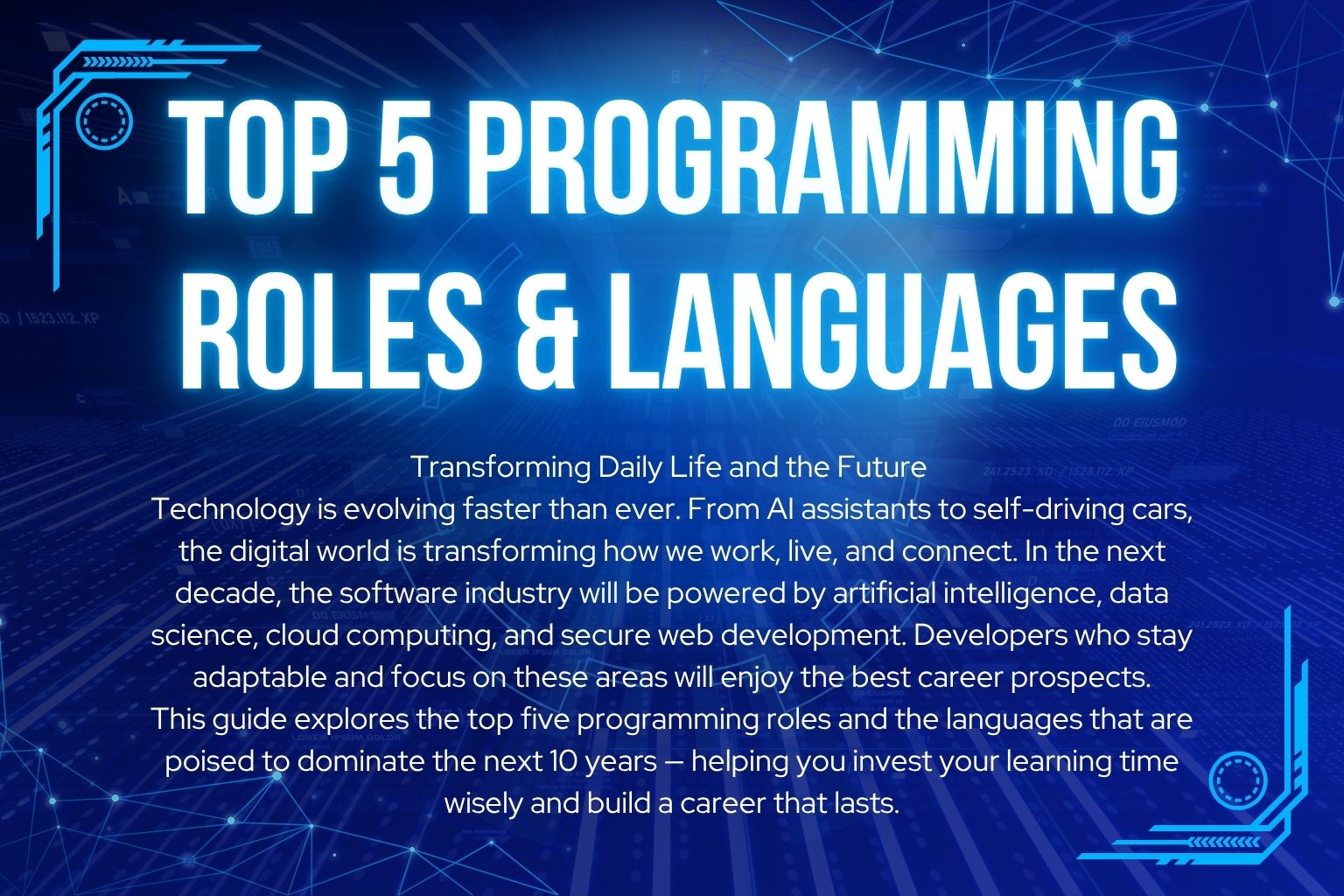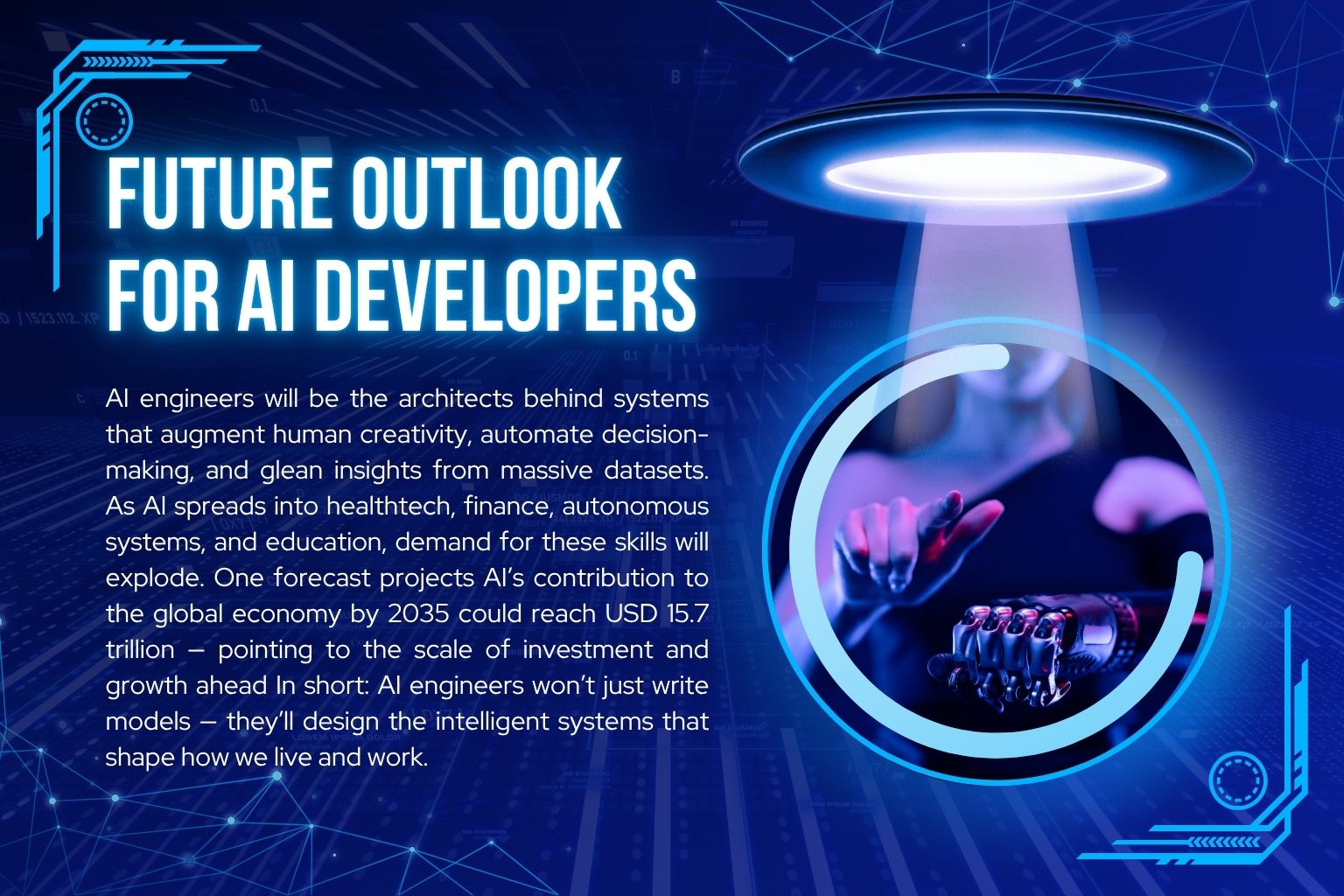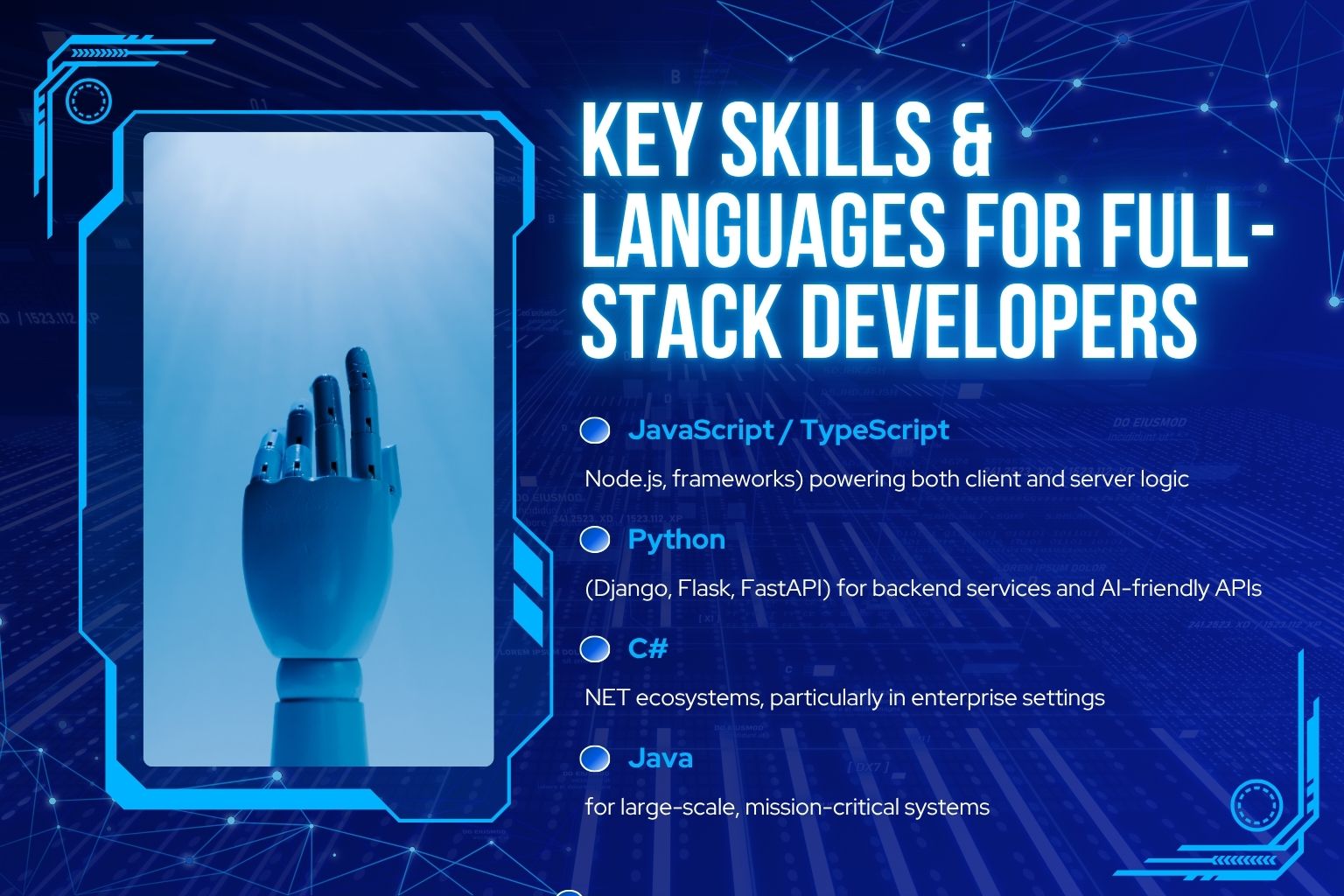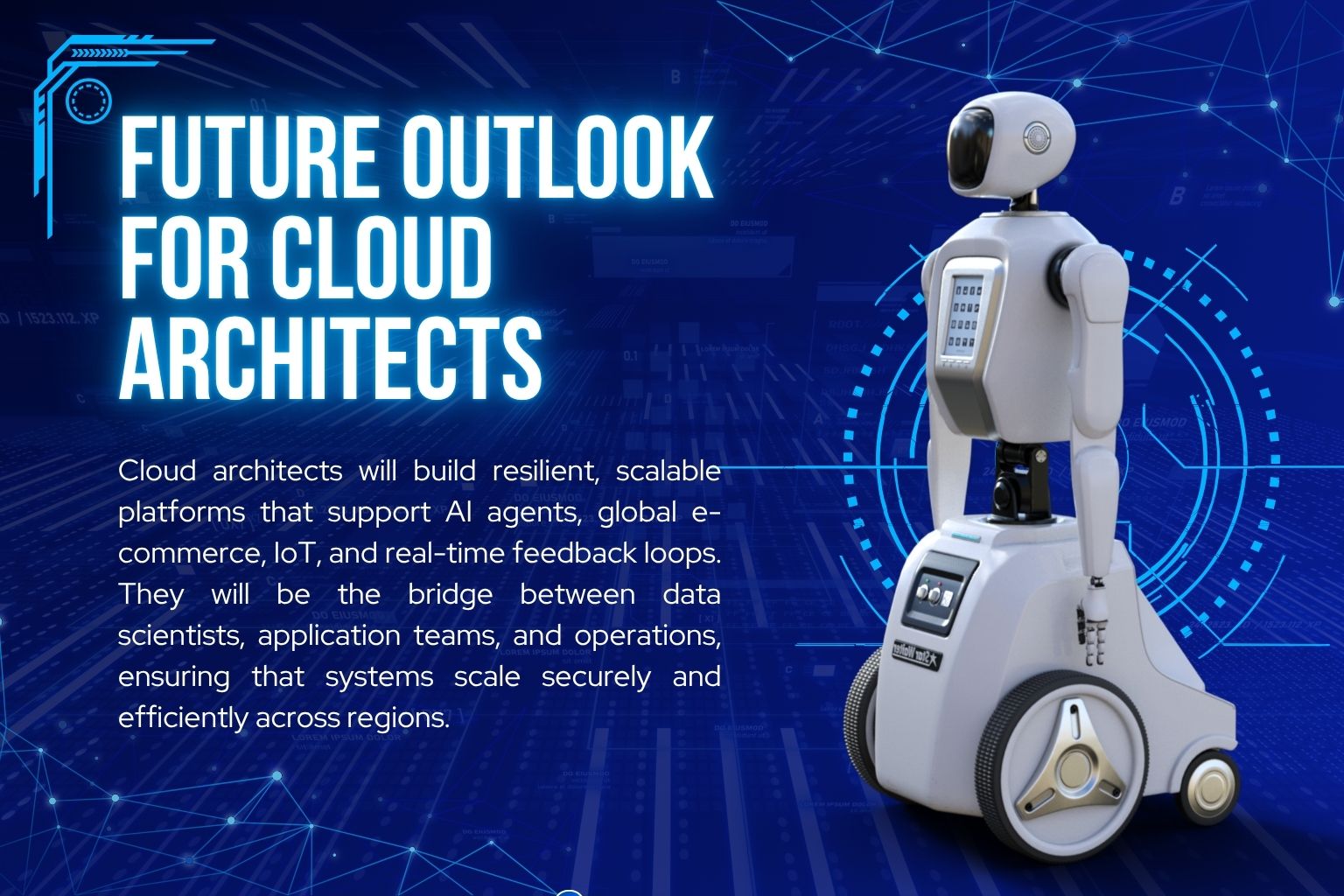Top 5 Programming Roles & Languages That Will Dominate the Next 10 Years
Smash Code
Oct 02, 2025

Technology is evolving faster than ever. From AI assistants to self-driving cars, the digital world is transforming how we work, live, and connect. In the next decade, the software industry will be powered by artificial intelligence, data science, cloud computing, and secure web development. Developers who stay adaptable and focus on these areas will enjoy the best career prospects.
This guide explores the top five programming roles and the languages that are poised to dominate the next 10 years — helping you invest your learning time wisely and build a career that lasts.
1. AI & Machine Learning Engineer – Building the Brains of the Future
Why This Role Will Dominate
Artificial Intelligence is no longer a “nice-to-have” — it’s becoming foundational to nearly every digital experience. Many companies are embedding AI into their core operations rather than treating it as an add-on. In fact, recruiters are struggling to fill AI roles: it’s estimated there are 1.6 million unfilled AI/software developer positions globally, an 85 % year-on-year increase in demand. (Full Scale)
Moreover, software development roles overall are projected to grow much faster than average — the U.S. Bureau of Labour Statistics estimates a 17.9 % increase for software developers from 2023 to 2033. (Bureau of Labour Statistics) This growth partly reflects that AI systems must be built, deployed, maintained, and improved — work that requires human creativity and oversight.
Key Skills & Languages for AI Engineers
To excel as an AI or machine learning engineer, mastering the right tools is crucial:
- Python (with TensorFlow, PyTorch, scikit-learn) — the de facto standard in model development
- R for specialised statistical analysis and research
- C++ / Java for performance-critical systems (e.g. robotics, embedded AI)
- Emerging languages like Mojo, combining Python-like ease with near-C performance
Newer languages and domain-specific tools are emerging to meet the demands of AI workloads. (LinkedIn)
Future Outlook for AI Developers

AI engineers will be the architects behind systems that augment human creativity, automate decision-making, and glean insights from massive datasets. As AI spreads into healthtech, finance, autonomous systems, and education, demand for these skills will explode. One forecast projects AI’s contribution to the global economy by 2035 could reach USD 15.7 trillion — pointing to the scale of investment and growth ahead. (fdtec.co)
In short: AI engineers won’t just write models — they’ll design the intelligent systems that shape how we live and work.
2. Full-Stack Developer – The All-Rounder Every Company Needs
Why This Role Will Dominate
Full-stack developers are versatile builders who understand both the user interface (front-end) and server/database logic (back-end). As architecture trends shift toward serverless computing, edge systems, and real-time data, companies need engineers who can tie everything together — not just work on isolated slices.
The boundary between front-end and back-end is blurring: features like client-side computing, offline capability, and AI-integration demand cross-domain fluency.
Key Skills & Languages for Full-Stack Developers
Successful full-stack developers are multilingual in the coding world:
- JavaScript / TypeScript (Node.js, frameworks) powering both client and server logic
- Python (Django, Flask, FastAPI) for backend services and AI-friendly APIs
- C# in .NET ecosystems, particularly in enterprise settings
- Java for large-scale, mission-critical systems
- Go & Rust for microservices, containers, and performance-sensitive modules
According to developer surveys and trend reports, Python and JavaScript continue to top usage charts, while Rust and Go–with their focus on safety and concurrency–are rising steadily. (Pluralsight)
Future Outlook for Full-Stack Developers

Tomorrow’s full-stack devs won’t just build CRUD apps. They’ll integrate cloud services, real-time streams, AI models, and progressive web features. Expect systems that anticipate user context, adapt offline, and provide highly personalised experiences — and full-stack engineers will be the ones stitching all these pieces together.
3. Cloud Architect & DevOps Engineer – The Backbone of Modern Tech
Why This Role Will Dominate
Virtually every company is migrating to the cloud. But “lift-and-shift” isn’t enough — to take full advantage of scalability, resilience, and cost-efficiency, architectures must be redesigned for the cloud. That’s where Cloud Architects and DevOps Engineers come in: they build and automate infrastructure, ensure security, and optimise performance.
With trends like multi-cloud, edge computing, serverless, and AI-ready infrastructure, these roles will become central to any tech-led organisation.
Key Skills & Languages for Cloud & DevOps
To thrive in this domain:
- Go (Golang) — widely used for cloud-native tooling and microservices
- Python — for automation, scripting, orchestration
- JavaScript / TypeScript — for serverless logic, glue code, integrations
- Deep knowledge of AWS, Azure, Google Cloud Platform, Terraform, Kubernetes, and containerization ecosystems
As infrastructures grow more complex (e.g. supporting real-time AI workloads at the edge), DevOps engineers will be responsible for bridging the gap between code, deployment, and monitoring.
Future Outlook for Cloud Architects

Cloud architects will build resilient, scalable platforms that support AI agents, global e-commerce, IoT, and real-time feedback loops. They will be the bridge between data scientists, application teams, and operations, ensuring that systems scale securely and efficiently across regions.
4. Data Scientist & Analyst – Turning Data Into Gold
Why This Role Will Dominate
Raw data is everywhere, but value lies in interpretation. Data scientists and analysts turn numbers into insights, predictive models, and narratives that drive business decisions. In a world pushing toward data-driven strategy, demand for these roles is skyrocketing.
Some projections suggest a 32 % growth in data science roles over the next decade. (365 Data Science)
Key Skills & Languages for Data Scientists
To make sense of data:
- Python (pandas, NumPy, scikit-learn, TensorFlow, PyTorch)
- SQL to query structured datasets
- R for advanced statistical modelling, hypothesis testing, and visualisation
- Tools like Spark, Kafka, and Dask for building big data pipelines
Given how AI relies on data pipelines, analysts will increasingly be involved in the full model lifecycle — from ingestion and cleansing to deployment and evaluation.
Future Outlook for Data Scientists
Data roles will evolve: you won’t just analyse — you’ll also deploy, monitor, and explain models in production. You'll act as a translator between the technical world and business leadership, ensuring that insights translate into actions. As AI integrates deeper into every domain, this contextual bridge will become indispensable.
5. Cybersecurity Engineer – The Digital World’s Guardians
Why This Role Will Dominate
As technology advances, so do threats. Cyber-attacks are becoming more sophisticated, especially with AI-powered tools on both sides. Regulatory pressure, data privacy concerns, and high-profile breaches mean cybersecurity will remain non-negotiable.
Security professionals will be in constant demand to counter threats, harden systems, and stay ahead of adversaries.
Key Skills & Languages for Cybersecurity Engineers
Security engineers need a mix of low-level and high-level skills:
- Python for automation, scripts, and forensic tooling
- C / C++ to understand system internals and exploit writing
- Rust for writing secure and high-performance modules
- Deep understanding of network protocols, cryptography, penetration testing, and secure architecture
Future Outlook for Cybersecurity Professionals
Cybersecurity engineers will defend everything from cloud systems to IoT devices. As AI tools become more accessible to attackers, defenders must leverage AI themselves, building systems that adapt, detect anomalies, and recover automatically. With privacy regulations tightening globally, organisations will need certified experts at every layer.
Languages to Watch Beyond 2025 — The Rising Stars
While Python, JavaScript/TypeScript, Go, Rust, and C/C++ will remain core, several emergent languages and technologies merit your attention:
- Mojo — combining Python-like syntax with near-native performance
- Carbon — pitched as a safe successor to C++ for systems programming
- WebAssembly (Wasm) — enabling secure execution of Rust/C++ in browsers and edge
- Others like Kotlin, Swift for systems, or domain-specific DSLs are also rising gradually. (Medium)
Learning these now — even at a basic level — can give you an early advantage in niche or high-performance domains.
How to Future-Proof Your Programming Career
- Master one language deeply, but stay multilingual
Pair language stacks like Python + Rust or JavaScript + Go to combine flexibility with performance. - Learn ecosystems — not just syntax
Frameworks, cloud services, DevOps tools — these often matter more than your fluency in “pure” syntax. - Understand programming paradigms
Concepts like concurrency, functional programming, and memory models carry across languages. - Build real projects
Contribute to open source, publish on GitHub, and assemble a portfolio that shows your growth and depth. - Experiment with emerging tech
Try using WebAssembly, Mojo, or AI APIs to see where they might complement your core skillset. - Sharpen soft skills
As AI handles more repetitive tasks, what sets developers apart will be communication, design thinking, and collaboration.
This aligns with an observation that “the best engineers in 2035 won’t be the best coders” — technical skills alone won’t suffice. (fonzi.ai)
Conclusion: Programming in the AI Era
Over the next decade, AI, data, cloud, and security will shape the software world. Developers who master roles in AI Engineering, Full-Stack Development, Cloud & DevOps, Data Science, and Cybersecurity will be at the forefront of innovation.
The languages to watch — Python, JavaScript/TypeScript, Go, Rust, C/C++ — all share a common thread: enabling intelligence, performance, and safety. Combine that with emerging languages like Mojo or WebAssembly, and you position yourself not just for the next five years, but the next 10.
FAQ — Top 5 Programming Roles & Languages That Will Dominate the Next 10 Years
1) Which programming roles will be most in demand over the next 10 years?
Short answer: AI/Machine-Learning Engineers, Full-Stack Developers, Cloud Architects / DevOps Engineers, Data Scientists/Analysts, and Cybersecurity Engineers. These areas are where business investment, platform work, and regulatory needs are concentrating—and they intersect (for example, AI needs cloud and data pipelines, and all of it needs security). (Stanford HAI)
2) Which programming languages should I prioritise learning right now?
Prioritise Python (AI, data, scripting), JavaScript/TypeScript (front-end + serverless/back-end), Go and Rust (cloud-native and high-performance services), plus C/C++ where low-level performance matters. These languages consistently top developer usage and “most-desired” lists while Go/Rust grow in cloud & systems niches. (Stack Overflow)
3) Is AI going to replace developer jobs? Should I be worried?
No, but the skills employers want are shifting. AI is automating repetitive tasks and creating a huge demand for engineers who can design, maintain, and safely deploy models. Organisations’ AI usage jumped significantly in recent years (most organisations reported adopting AI in 2024), which means more roles that require AI fluency rather than fewer roles overall. Upskilling in AI concepts, data pipelines, and ML ops is the safer path. (Stanford HAI)
4) What about new languages like Mojo — are they worth learning?
Mojo is emerging as a language focused on high-performance AI workloads (Python-like syntax with system-level performance aims). It’s promising for GPU/accelerator programming and model optimisation, but it’s still early. Learn the concepts (how performance and accelerators work) and experiment—but prioritise proven languages (Python, JavaScript, Go, Rust) first unless you’re targeting bleeding-edge AI systems. (Modular)
5) How important is WebAssembly (Wasm)? Should I learn it?
Wasm is rising in importance for secure, high-performance code on the web and edge. Adoption in mainstream dev is still growing (many teams experiment with Wasm in serverless or performance-critical modules), so basic familiarity is valuable—especially if you work with Rust/C++ and care about edge or browser performance. It’s a “good to know” rather than an immediate must for every developer. (Uno Platform)
6) I’m a front-end or full-stack developer — how do I transition toward AI or cloud roles?
Practical path: (1) get comfortable with Python (data libraries and basic ML), (2) learn how to call model APIs and embed models in apps (FastAPI/Flask or Node patterns), (3) add cloud fundamentals (deployments, containers, basic infra as code), and (4) learn MLOps basics (model versioning, CI/CD for models, monitoring). Build small, deployable projects that combine UI + a simple model + cloud deployment. This portfolio approach shows end-to-end skills. (Stanford HAI)
7) Do data scientists and machine-learning roles require the same stack?
There’s overlap but differing emphases: Data scientists often prioritise data cleaning, statistics, exploratory analysis, and prototyping with Python/R/R and SQL. ML engineers and MLOps specialists focus more on production readiness, model deployment, scalability, monitoring, and infrastructure (cloud, containers, orchestration). Learning the end-to-end pipeline (ingestion → training → deployment → monitoring) makes you far more valuable. (Stanford HAI)
8) How critical is DevOps/cloud expertise for developers today?
Very. Cloud platforms (AWS, Azure, GCP) and tools like Kubernetes and Terraform are central to delivering scalable apps and models. Cloud expertise helps you deploy AI models, scale microservices, and make systems cost-efficient and reliable—skills that employers increasingly expect. Cloud job openings and the growth of cloud infrastructure remain significant. (CloudZero)
9) What should I learn first if I want a future-proof career?
Start with one strong, widely applicable language (Python or JavaScript), then layer on: (a) fundamentals of data structures/algorithms, (b) basic cloud and containerization concepts, (c) a second language that complements your stack (Rust or Go for performance; TypeScript if you started with Python), and (d) soft skills and system design. Build real projects, contribute to open source, and focus on ecosystem tools (frameworks, CI/CD, infra as code). (Stack Overflow)
10) How important is cybersecurity knowledge for developers?
Increasingly important. As apps become AI-enabled and distributed, security must be designed in (not bolted on). Developers who understand secure coding, threat models, and basic cryptography add huge value. Cybersecurity skills pair especially well with cloud and systems work. (Stanford HAI)
11) Where can I find reliable learning resources, and what certifications help?
Reliable sources: official docs (Python, Node.js, Rust), cloud provider training (AWS/Azure/GCP learning paths), and project-based courses that include deployment and monitoring. Certifications (AWS Certified, Google Cloud Professional, CNCF/Kubernetes) help signal cloud competency; specialised certs in security or data engineering are useful depending on your target role. Combine certificates with public projects to prove skills. (CloudZero)
12) Quick hiring signals employers use in 2025 — what recruiters look for?
Employers look for: demonstrable projects (deployed services, model deployments), cross-domain skills (cloud + ML + code), evidence of continuous learning (public contributions, recent relevant coursework), and communication/soft skills to work across teams. AI fluency is becoming a baseline for many engineering roles. (Stanford HAI)
Stay curious. Stay adaptable. Build systems that matter. Those who do will thrive in the exciting, AI-driven future ahead.